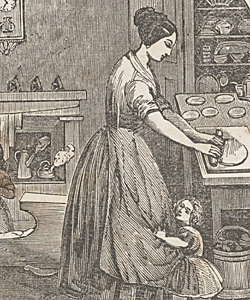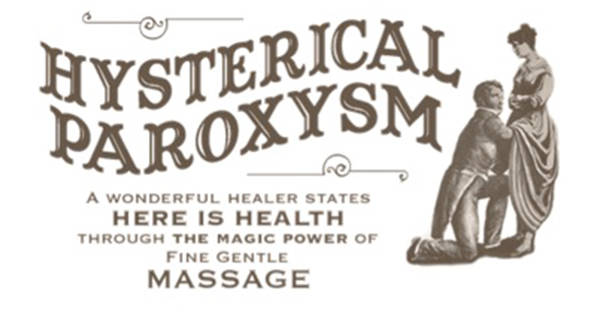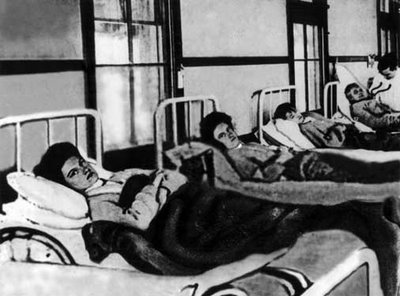Warning,
this article has sexual themes to it!
How did women become
silenced in the first place? This is a question that many people wonder. One
time period that was majorly sexist and silenced women's voices was the
Victorian times. People already know that the Victorian times were bad for
women, but they often don’t know why. Sometimes they don’t even know how. Roles
in the household are the first thing that should be touched on. For men, they
often spent most of their time working and making money for the household. For
women, they spent their time having kids, taking care of the kids and
cooking/cleaning the home. This means the woman of the household spent most of
their time in the house and separated from the public.

What
does it truly mean to be a perfect wife in the Victorian times though? A good
Wife is virtuous, busy, and their whole life revolved around the house. Men’s
job was to work and be social. According to Lynn Abrams, “The increasing
physical separation of the home and the workplace, for many among the
professional and commercial classes, meant that these women lost touch with
production, and came to fashion an identity solely within the domestic sphere.
It was through their duties within the home that women were offered a moral
duty, towards their families, especially their husbands, and towards society as
a whole.” So if someone was born as a
woman, they only had one option, to be quiet and work on home life. Some state
that most women were happy with this, but how much of this was enforced and
taught to be enjoyable? How many women faked it? It must be noted that ideas
like this are still here in 2019, but luckily most women have the freedom to do
what they want.

Fashion even showed a
woman’s role in the house. According to Lynn Abrams, “By wearing dresses that
resembled their interior furnishings, women became walking symbols of their
social function - wife, mother, domestic manager.” Victorian women's clothing
often mirrored their role in the house. Their hips, breasts, and other body
parts were emphasized to show the separation from the outside. This clothing
restricted movement so much that some women fainted. Many speculate that this
could have been a way men controlled women, how could they work with such
difficult clothing? Women were supposed to be beautiful and presentable, and if
they worked it would be very difficult to do both of those things in their
minds. Even clothing contributes to the idea that women in the Victorian times
were silenced. It made them unable to work, and further enforced the idea of
them barely having a social life. In turn, they had no voice.
A big topic in the
Victorian time to silence women was labeling them with hysteria. Hysteria was
something that even the Greeks talked about. Even the term hysteria is deeply
rooted and connected to women, according to Vanessa Traniello, “The term
hysteria comes from the Greek word hysterika,
meaning Uterus.” Hysteria was a common diagnosis for women in the Victorian
times. Basically, diagnosing a woman with it was saying that they don't know
what’s wrong with the woman or they couldn’t quiet her down, so they were going
to blame it on her body parts. Even if a woman was emotional and outspoken, she
would be labeled with hysteria directly silencing her voice with even her own
body. Sound familiar? Many women would be labeled with this, and according to
the victorian-era they would diagnosis women with it and say it’s because they
have not had sex. So, what was the treatment? An example of the treatment was
called a “Pelvic massage” which was the manual stimulation of the private parts
by a doctor until the women basically orgasms. They called this “hysterical
paroxysm”. According to victorian-era, “In 1859, a physician claimed that a
quarter of all women suffered from hysteria. He cataloged possible symptoms,
which included faintness, nervousness, insomnia, fluid retention, heaviness in
abdomen, muscle spasm, shortness of breath, irritability, loss of appetite for
food or sex, and ‘a tendency to cause trouble.’” That last part is the most
disturbing. What do they mean by a woman causing trouble? Well, in the
Victorian times it was often a woman who didn’t like the sexist box they were
placed in. Hysteria was a method of control used by men. Even if a woman was
sick with something, it would often be confused with hysteria and that led to
the problem of more suffering or even the death of the woman, all because
people would not listen to her. This still happens today, even though hysteria
is not often what is diagnosed.

Another
example of women being silenced was being thrown in an asylum. If a woman
defied men, they could be thrown into an asylum. According to the science
museum BroughtToLife, “A woman who rebelled against Victorian domesticity
risked being declared insane and committed to an asylum. This was usually at
her husband’s or father’s request, and she generally had no right to contest or
appeal. Women were further disempowered by moral treatment once locked away.
This cornerstone of Victorian psychiatry claimed male dominance was
therapeutic. The doctor ruled the asylum like a father ruled his family.” This
is a prime example of the idea that men rule the house, therefore women were
not able to do anything about their own treatment during said time. Even if that
meant the woman was locked up! How could women speak during these times? It's
understandable that they wouldn’t, considering they could be diagnosed with
something or even be thrown into an asylum without being able to say a word.
That had to be a scary time for women.

Discussing the
silenced voices of women does not mean that women were weak back then. Living
in that kind of world and struggling through all that had to be tough. To look
at these women and think they were weak is a huge miscalculation. The
industrial times brought on some new feminist ideas such as women working.
Learning about these silenced voices hopefully brought everyone to the idea
that we should never go down that dark path again. No one should be silenced
because they defy the social norms of the society. Hopefully, when you read
this, you were as shocked as I was at some of these facts! Women have been
silenced for too long, we have a long way to go but we have made some
remarkable progress since the Victorian times. That doesn’t mean that during
imperialism this attitude didn’t affect people Britain were trying to take over
though! Tune into my Postcolonial page to learn more about that!
Works Cited
Abrams, Lynn. “History
- Ideals of Womanhood in Victorian Britain.” BBC, BBC,
www.bbc.co.uk/history/trail/victorian_britain/women_home/ideals_womanhood_04.shtml.
“Female Hysteria
during Victorian Era: Its Symptoms, Diagnosis & Treatment/Cures.” Victorian Era Life in England. Victorians
Society & Daily Life, victorian-era.org/female-hysteria-during-victorian-era.html.
“Science Museum.
Brought to Life: Exploring the History of Medicine.” Women and Psychiatry,
broughttolife.sciencemuseum.org.uk/broughttolife/themes/menalhealthandillness/womanandpsychiatry.
Traniello, Vanessa.
“Hysteria and the Wandering Womb.” Hysteria
and the Wandering Womb, academic.mu.edu/meissnerd/hysteria.html.
No comments:
Post a Comment